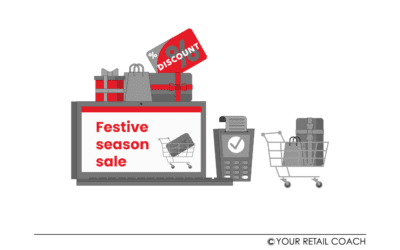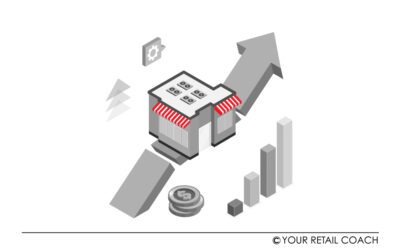E-commerce Business Operations
At present, the e-commerce industry is like a bonanza, with everyone wanting a piece of the e-commerce pie. In rudimentary terms, e-commerce uses technology to buy goods and services via various platforms. To get your business ground up in a productive manner, leveraging a notable consulting firm like YRC is the best course.
YRC has a team of consultants who provide bespoke solutions irrespective of the e-commerce business models that your organisation may have, whether it is B2C (Business-to-Consumer), B2B (Business-to-Business), C2C (Consumer-to-Consumer), or C2B (Consumer-to-Business).
Operational plan for e-commerce business
The core of an effective e-commerce business operation is the presence of a solid operational plan. An operational plan delineates the work to be done by all departments on a micro-level. The right operational strategy maps out the process of order fulfilment, timely shipping on a domestic and global scale while also ensuring inventory management to meet the customers’ demands. YRC has robust industry experience in devising operational plans for e-commerce businesses that will result in your business working like a well-oiled machine without compromising organisations capitalised ultimately meeting the revenue goals. The key components mentioned below form the foundation of an operational plan.
Operations management for e-commerce businesses:
Operations management for an e-commerce business is what sets the tone for its sustainability and success. An e-commerce business is invariably perceived to have a low cost of running than a brick-and-mortar store. Principally, it would be correct given that having a digital business reduces manpower and overhead expenses. Nevertheless, internet commerce stays true to the standard operations process of any business, where the bottom-line targets the potential customer, retains them and generates profits. YRC’s high calibre team assists in building a relevant business plan after undertaking thorough research and provides strategies to achieve business growth and profit.
Building Teams
A brilliant idea or service is nothing without a suitable team of people to execute it. YRC’s team provides intervention by emphasising that the people brought on board should be experienced professionals with insight towards the ideation and the industry while also being capable of steering the product and company forward.
Joining hands with like-minded people and working towards a common goal is what will take your e-commerce business to the next level. Building a team involves not just having an elite leadership but hiring across the board, where the organisation’s vision percolates to all the employees. Our operational planning team develops a befitting operational plan that states the tasks to be performed and sets the yardstick for the team, and the staff, in turn, works on following through with the plan, leading to a symbiotic relationship.
Returns & Refund Management
Returns management is a practice in the e-commerce industry in which customers can return a purchased product. It includes product collection from the customer, checking the returned or exchanged item, and replenishing the stock. Returns management system involves customer interaction and organisation of the inventory.
Refund management refers to the terms and conditions for returning a product and/ or refund of the same, as applicable. Our consultants model a seamless returns and refund procedure, which helps in winning major points in customer loyalty and retention, leading to continued business.
YRC’s able team helps recommend a system for tracking product deliveries and returns so that storage space in warehouses and product stock is optimally maintained.
Company structure
Company structure, simply put, is the organisation structure. It determines the tasks to be performed, the departments and roles filled, and the flow of information within the organisation.
Company structures are subjective in that they vary depending upon the nature of the business and the product offering. Our operational planning professionals provide their expertise, enabling you to make the right decision regarding factors like which commonly used e-commerce business structure would be judicious for you; functional structure, divisional structure, matrix structure, or hybrid structure.
Typically e-commerce businesses have the following roles; e-commerce head, digital marketing manager, IT manager, web developer, inventory and logistics manager, finance and accounting manager, customer service associates. YRC’s experts provide their unbiased opinion on what type of talent will be well suited for your business and aid in employing specialists.
Optimising COGS
COGS or Cost of Goods Sold refers to the expenses incurred to produce a particular good and the amount of revenue generated by its sale. This is a metric used by organisations as an indicator of the product’s profits and the inventory in stock. YRC’s team provides analytics and suggests processes where COGS is an effective method to check the e-commerce organization’s financial health, track inventory and expenses.
COGS determines ways to fully capitalise on the e-commerce business operations. The below-mentioned factors will keep the COGSs in check :
– Using technology and various software for prompt and effective collection of data. Automation reduces the margin of error and guarantees timely delivery.
– Keeping control of the cost of raw materials without affecting the quality of the end product is a vital part of COGS.
– Rebates from the supplier, basis the number of raw materials bought. Bulk material bought generally results in markdown prices.
Pricing
There is a misnomer that the lowest pricing of a product can achieve maximum sales. After researching the competitor’s price points, product cost, the intended revenue margin, the potential consumer, and the product/service’s distinguishing features, a pricing strategy has to be arrived at. Market leaders adopt many other pricing schemes in the online space like skim pricing, charm pricing, penetration pricing, loss-leader pricing, but you have to eventually decide what is most favourable for your company. Like many things in e-commerce business operations, a one-size-fits-all approach does not apply to the pricing strategy. YRC’s operational planning guides establish a distinct pricing strategy based on the market and the business goals which work well for your corporation.
Managing Customer Support
Customer support is a part of customer service management, and essentially it involves a consumer buying a product and interfacing with an employee of the same company. In e-commerce operations, it includes the customer support provided through the purchasers’ purchase lifecycle. This is one area that is often ignored by digital businesses, which ends up negatively impacting them. Niche businesses tend to score over others in terms of personalised customer service by aptly catering to the buyer’s needs.
YRC’s team of cherry-picked advisers come up with a systematic and well-thought-out customer service management strategy to meet your e-commerce company’s need. They effectuate a system where customer interaction with support representatives positively influences customer satisfaction, getting continued business from existing customers, and getting new business through word-of-mouth marketing.
DIY Fulfilment
E-commerce fulfilment is the process of orders being packed, shipped, and delivered to the customer. E-commerce fulfilment involves the storage of the inventory in fulfilment centres, picking and packing of orders, and logistics. The product’s delivery time and shipping charges are two significant parts of a customer’s shopping experience, they determine whether a customer will ever shop again with your brand.
The order fulfilment operation starts post-purchase made by the shopper. This fulfilment process is relevant to Business-to-Consumer (B2C), where orders are shipped to individuals and Business-to-Business (B2B), organisations capitalise where orders are shipped to dealers. Our consultants direct you towards selecting the right alternative, whether to use a third-party logistics provider or drop shipping or outsource the fulfilment, depending on the stage of the business and the most cost-beneficial option.
Managing Inventory
Inventory management is the process of ordering and warehousing the products. It includes all aspects from the raw material to finished goods. YRC’s team advises the ideal process to have an organised inventory flow, and this enables to keep track of stock at all times and be aware of the warehousing space. By predicting the business and the customers, e-commerce businesses can choose between dropshipping or tying up with merchant partners.
Scaling Globally
To conquer the global market, operational planning becomes the literal backbone of the e-commerce business. There are various attributes: the language, the market, the currency, local laws, overseas shipping and logistics, and international competition, which will differ from the home base of operations. In this scenario, YRC’s team does in-depth groundwork that gives the e-commerce business owners the necessary data and strategies that equip them to make prudent decisions. They also counsel the business that it serves well for brands to remain true to their values and unique selling propositions to deliver the same exclusive experience to their international customers.
If you are looking for a reputed consulting partner to traverse through your business without potential obstacles and solve problems expeditiously, reach out to YRC. YRC provides immeasurable support to advance your e-commerce business operations while meeting your organisation’s vision by facilitating you to have the right mix of people, processes, and technology, leading to your brand being unbeaten.
Get Advice for E-commerce Business Operations
Related Blogs
Making the most out of the festive season shopping: A Customer Perspective for Retailers
Decoding the Festive Shopping Spree For us, as customers, the festive season is a licence to spend. The vibes of festivity ushers with joy and a sense of celebration. This elevated mood often turns into an enhanced willingness to spend and indulge in shopping. It is a...
Mitigating Business Risks in Retail
Spotting the Swirls Sailing the stream of retail is canopying between opportunities on the surface and risks as the current of that stream. If the bad swirls are not spotted in advance, it can turn things undesirable. While big brands grapple with issues like lapses...
How Retailers are Enhancing Customer Experience (CX) with Hyper-Localisation
Hyper-localisation is an alignment strategy that helps retail brands and businesses mould into the requirements of a locality-based market environment. Marketing-wise, it helps retailers tailor their value propositions to cover the needs and expectations of highly...





We work only for Visionaries.